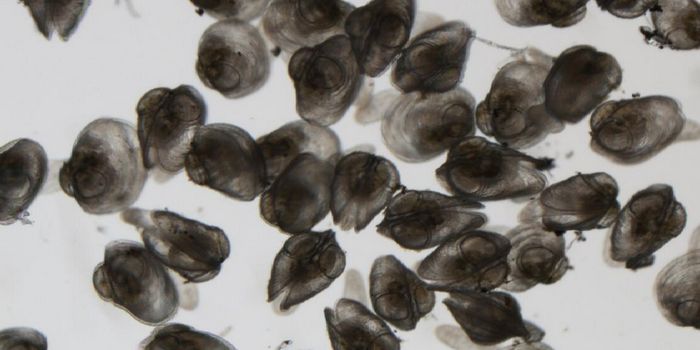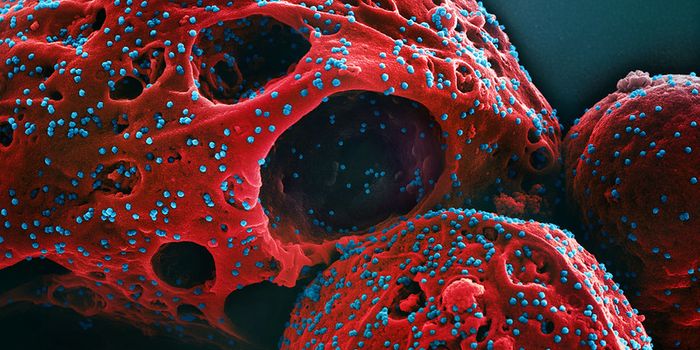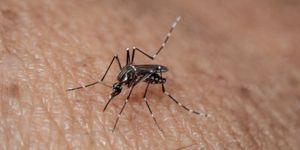Investigating the Links Between Viruses and Cancer
The Pan-Cancer Analysis of Whole Genomes (PCAWG) has brought over 1,300 scientists together to gain new insights into the genetics of cancer. As a part of that effort, researchers have now conducted a survey of the viruses that can be found in different kinds of cancer. Using genetic data obtained from around 38 types of 2,600 cancerous tumors, scientists revealed the presence of viral DNA in thirteen percent of them; traces of 23 different types of viruses were found in samples from 356 cancer patients. As expected, known viral drivers of tumors were most common. The researchers also learned more about the mechanisms that viruses use to activate genetic mutations that drive cancer.
"We already knew of some strong associations between infections and cancer. For example, the presence of Helicobacter pylori in the digestive tract can lead to stomach ulcers and is associated with stomach cancer," said Dr. Daniel Brewer, from the University of East Anglia's Norwich Medical School and a Visiting Worker at the Earlham Institute (EI). "Meanwhile some types of the HPV virus can cause cervical cancer."
If a human tissue sample is subjected to whole-genome sequencing, the viral DNA that might be infecting cells in that sample will also get sequenced. "This has given us a fantastic opportunity to collect data to find new associations between viruses and different types of cancer," said Brewer. "This is the first time that a systematic study of the majority of cancer types for viruses has been made. It is important because finding new links between infection and cancer types has the potential to provide vaccines, such as the HPV vaccine, which could reduce the global impact of cancer."
Scientists have identified eleven infectious microbes that can cause cancer, including Hepatitis B and C, the Epstein-Barr Virus, Helicobacter pylori, and some types of human papillomavirus (HPV). HPV alone causes around 640,000 cases of cancer every year. In this work, the researchers looked for both known and unknown carcinogenic viruses. Epstein-Barr viruses (EBV), which can cause several cancer types including stomach and nasopharyngeal cancer, was present in 5.5 percent of samples, while Hepatitis B was in eighteen percent of the liver cancer samples.
"The issue of which viruses are linked to cancer is highly relevant in medicine because, in virus-related cancers, real prevention is possible," said Dr. Marc Zapatka from German Cancer Research Center (DKFZ). "If a carcinogenic virus is identified, there is a chance of avoiding infection with a vaccine to prevent cancer developing."
HPV was found in nineteen of twenty samples of cervical cancer and eighteen of 57 samples of head and neck tumors. They also found that adenoviruses and baculoviruses are not linked to cancer.
"We found that the presence of HPV is mutually exclusive to some of the important changes seen in head and neck cancer, which means that the HPV virus can help the cancer develop without additional changes to its genome," said Brewer.
Some other viruses were found that are known to cause cancer, like a retrovirus in a kidney cancer case and cytomegaloviruses in gastric cancer samples. Viruses were found to integrate into their host cells' genome in many cases, which seems to promote mutations.
"We also found that the presence of a virus in a tumor is associated with a pattern of changes in the genome that has been associated with faulty DNA damage repair mechanisms in the human cell. This suggests a role of impaired antiviral defense as driving force in cervical, bladder and head-and-neck carcinoma," Brewer added.
"When analyzing the whole cancer genome, we discovered traces of viruses in considerably more tumors than in earlier studies that were based on investigating the RNA only. Nevertheless, we were not able to confirm the common speculation that other, as yet unknown viruses are associated with cancer," said Professor Peter Lichter from DKFZ. "However, in many cases, we now have a clearer idea of how the pathogens cause malignant mutations in cells."
Sources: AAAS/Eurekalert! via University of East Anglia, Nature Genetics




![[Guide] 7 Strategies to Boost Laboratory Collaboration](https://d3bkbkx82g74b8.cloudfront.net/eyJidWNrZXQiOiJsYWJyb290cy1pbWFnZXMiLCJrZXkiOiJjb250ZW50X2FydGljbGVfcHJvZmlsZV9pbWFnZV83YzBjZWIwM2Y5YzI4MmFlYzBhZDZhMTcyNTQ1ZGU3YmE4Y2MzMDYyXzUxNDkuanBnIiwiZWRpdHMiOnsidG9Gb3JtYXQiOiJqcGciLCJyZXNpemUiOnsid2lkdGgiOjcwMCwiaGVpZ2h0IjozNTAsImZpdCI6ImNvdmVyIiwicG9zaXRpb24iOiJjZW50ZXIiLCJiYWNrZ3JvdW5kIjoiI2ZmZiJ9LCJmbGF0dGVuIjp7ImJhY2tncm91bmQiOiIjZmZmIn19fQ==)



